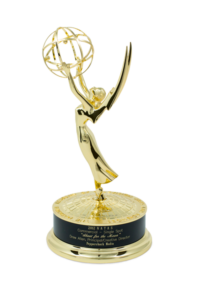By Lauryn Medeiros
When preparing to produce a film, it is hard not to think of the phrase that all filmmakers dread: everything that can go wrong, will go wrong. Just when you think you have it all planned out and perfect, something unexpected happens that can sometimes delay a whole shoot. However, there are a few things to keep in mind that may help boost your confidence in the planning process. One significant idea is storyboarding.
Storyboarding is something that is crucial when planning a film. Though you may say, “I’m no artist” or, “I probably won’t even look at that during the shoot,” it can provide you with a constant to depend on when all else fails. If everything else becomes off-balance, those storyboards can certainly help keep a filmmaker on track. Let’s face it, filmmaking can be the most stressful thing in the world sometimes, and so having images that tell you exactly what to do and allow you to visualize your dream on camera can keep you sane, for the most part. Take it from me, an intern at Peppershock Media Productions who has certainly gone through a filmmaking experience that was saved by storyboarding.
During my senior year in high school, I was working on a narrative film project with a group of other film students. Not only did I work on the screenplay, but I also was a part of the whole planning process. In other words, this film meant the world to me, and I did not want anything to hinder the final product. Sure enough, on the only day we could shoot, that phrase that my professor had drilled into every student’s head came back to haunt me: everything that can go wrong, will go wrong. Two of our main actors bailed, the wind picked up, and the daylight started fading on the beautiful beach location we were at. Luckily, we had our scripts and enough actors (last minute people we had found after calling almost everyone we knew). Don’t forget those storyboards, of course. We carried those with us, the ones that we had all slaved away on and did not think we needed. Our professor had required them, so of course we had no choice but to complete them and bring them along.
Those storyboards ended up saving the film from complete chaos; they contributed in quickening the shoot as well as making it more organized. Though the wind was extreme, our actors were new, and the day was ending, we still had that important constant we needed to get us through this shoot: the visuals drawn on the storyboards that directed each shot, each camera angle.
I highly recommend storyboarding. Not only will it help you visualize your film, it also creates a more efficient environment on set. Drew Allen, the production manager and co-owner of Peppershock Media Productions, explains that it correlates with your script and your shotlist, helping to bring everything together better. It also helps when you are blocking out shots with the actors. Though storyboarding is not always typical for every type of film, such as documentaries or 30-second spots, it has its definite advantages in other aspects of film. According to Allen, “Storyboarding is even helpful in selling a concept to a client.” It is nice to have a “visual blueprint”, as Allen describes it, in showing the client what is being planned. Allen also points out, “When you are on set and your actors are all standing around waiting for direction, if you have a good visual, it saves you a lot of time on set, as well as money.” In short, when in doubt, try storyboarding, and have fun with it. Those sketches most certainly will have a good impact on your film, one way or another.





